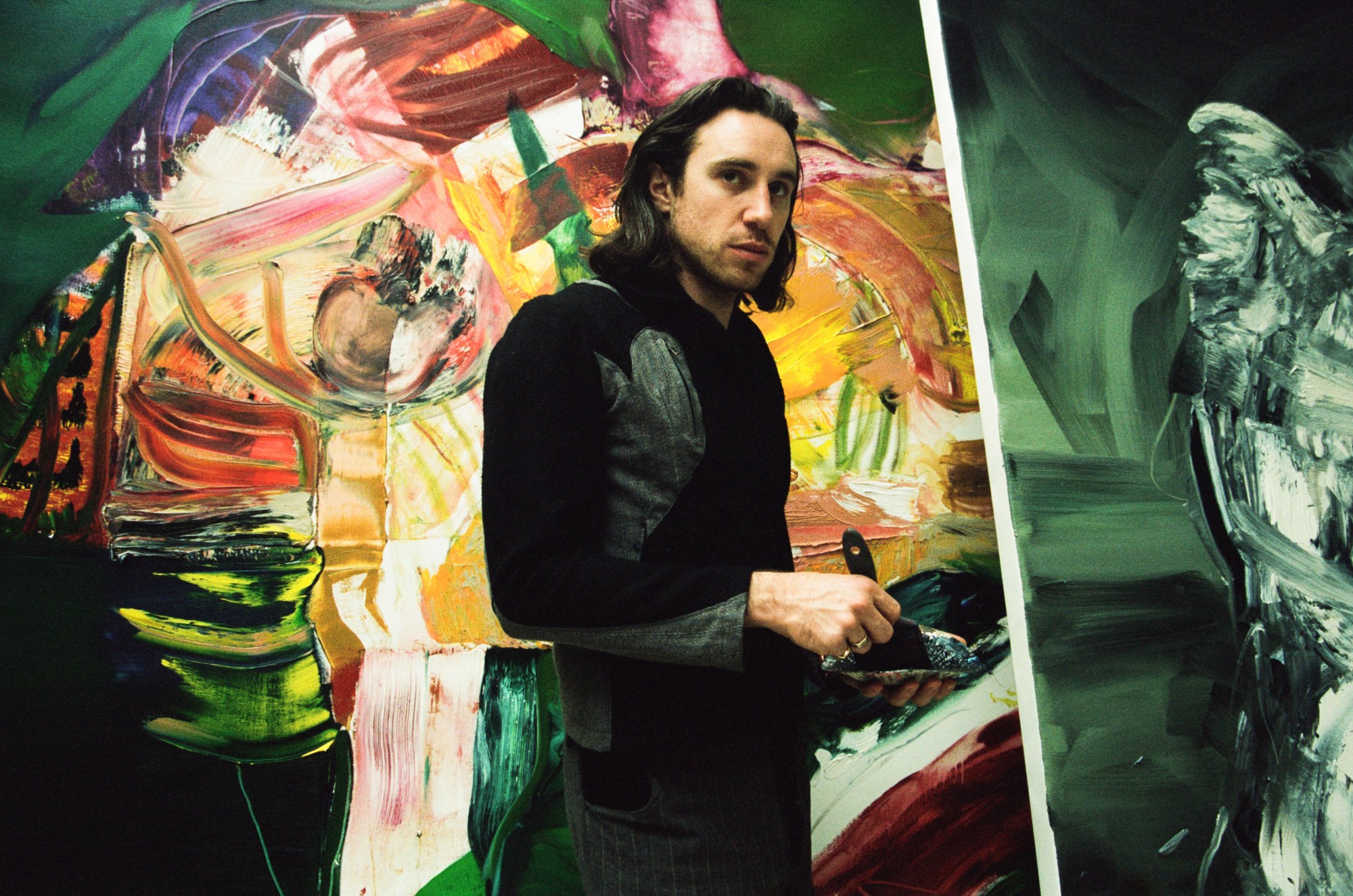When Alexander James was a child, he loved going to the British Museum. It’s a special and perplexing place when you’re small. Inside those temperature-controlled halls it’s not just the idea of history itself you have to grapple with – centuries stretching away, relics of unknown times and lands crowding in on every side – but scale. Being small, the statues are that much larger. They tower above one’s head, majestic and eerie: the pharaohs, the mythical creatures, the figures in chipped drapery missing their heads, or limbs, or little fingers.
If you look closely at Alexander’s paintings, the outlines of his figures begin to look almost collaged: a head cocked at an angle, one prominent leg emerging from the swirl of colour. Recently, he has been returned to various limestone statues from 500 BC held in the museum, researching their origins. He is fascinated not only by the “the texture and form,” but the way they demonstrate how little you need to recognise the human body – a set of arms, the merest hint of facial features. He thinks about the limbs that are not present, and the phantom suggestion of an outline they leave behind.
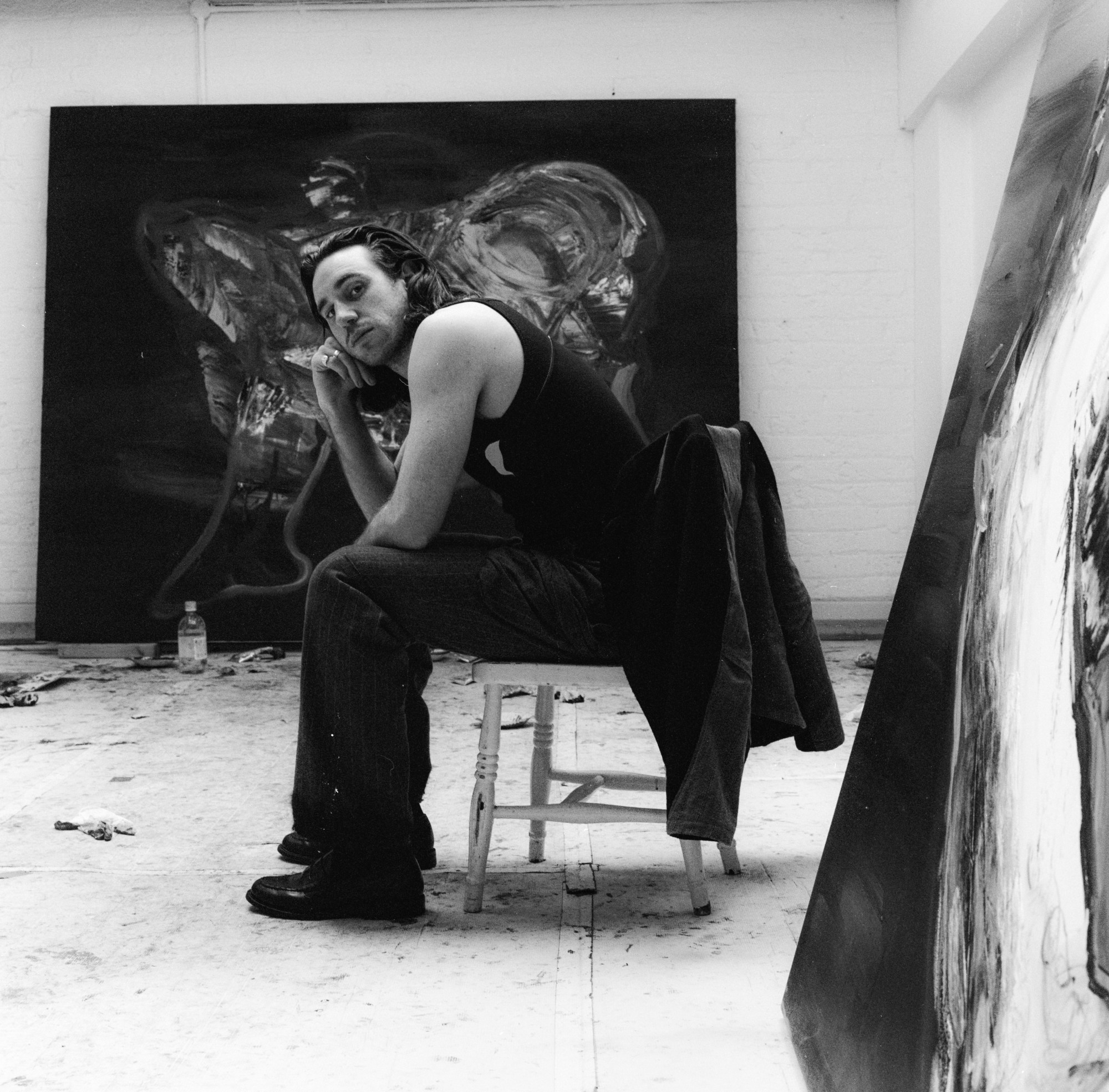
Alexander has been making waves in recent years for his colourful, atmospheric oil paintings that meander through these questions of time, history, and memories both personal and collective. Having graduated from Camberwell in 2015, he has since exhibited his work in London, Berlin, Paris and New York at institutions ranging from the V&A to Room 57 and the Daniel Benjamin Gallery. Several new works of his are included in The Marlborough Gallery’s current group show Face to Face: A Celebration of Portraiture, placing him among a line-up of luminaries old and new including Lucian Freud, Francis Bacon, Berenice Abbott, Alex Katz, Maggi Hambling, Celia Paul, and more. “It feels a bit surreal being alongside Freud, Bacon, Katz,” he says, leaning back on his chair in his west London studio. “These are the guys I studied in school. I still have their books everywhere… I’m a big fan of Lynn Chadwick too.”
The paintings of his being exhibited are from a wider body of work that he describes as existing happily somewhere between the abstract and the figurative. Where previous projects, such as his exhibition Sharper Than Razor Blades, Softer than Leather, touched on his grandfather’s love of Western movies and Alexander’s own adolescent attempts at punk styling, here he has jumped back a generation to mingle his memories with stories of his émigré great-grandfather who moved from Russia to Poland and then came to London during WWII. “He started by opening up a salon,” Alexander says. “His name was Henry, and it was called Henry’s Salon. It was in Aldgate East. He was a bit of a wheeler dealer, this entrepreneurial type character. His salon popped. He had immaculate style, here was a bar at the back. People… creatives, artists, a lot of like, local gangsters would come in and get their hair cut and hang out.”
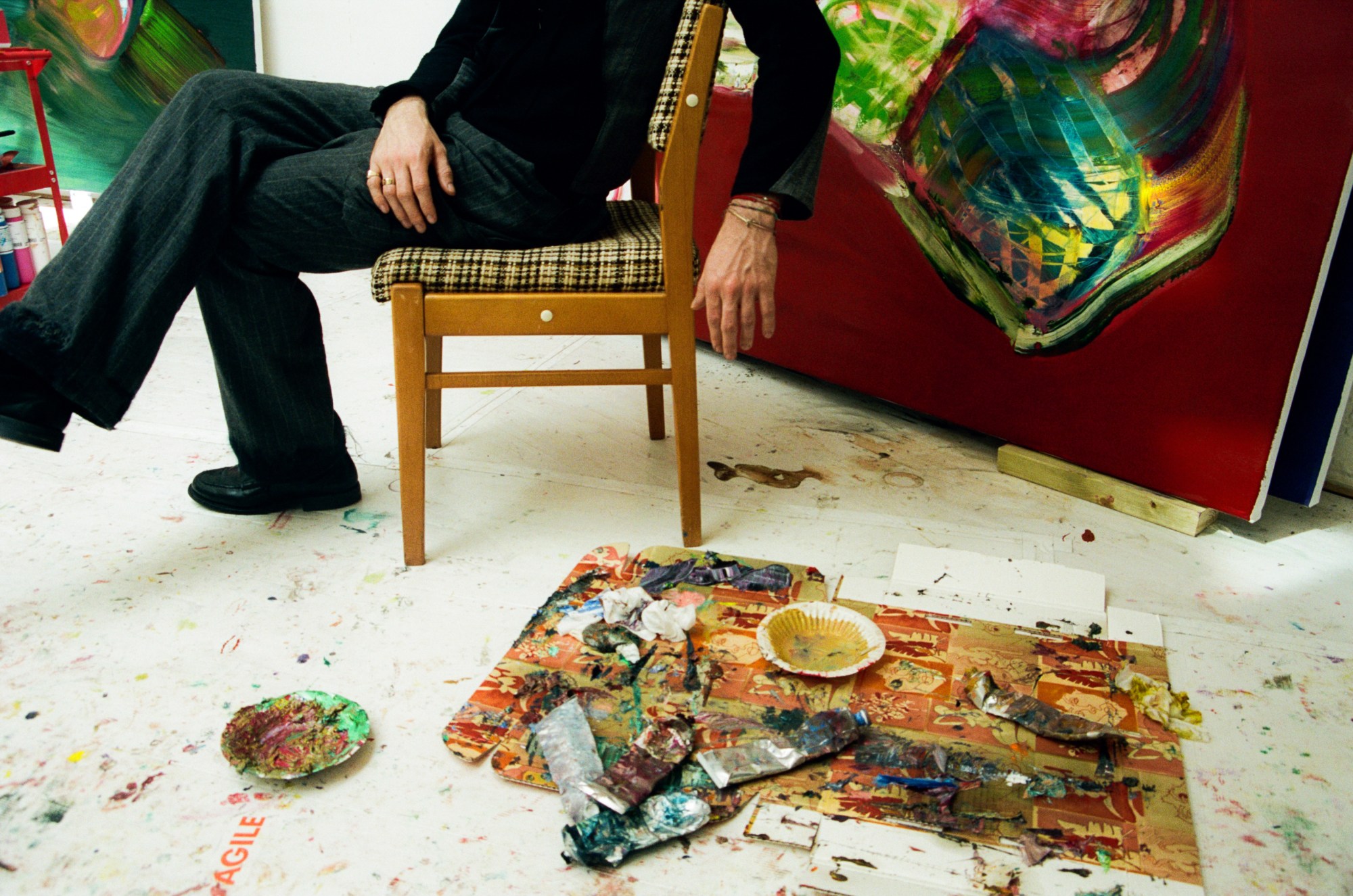
Alexander only ever encountered his great-grandfather through photos and family lore, largely via his grandfather – Henry’s son. “A lot of the faces in these works are my great-grandfather,” he says. “Sometimes it’s a little more blurred. Sometimes it’s disappearing.” For him, there’s something interesting in this idea of inherited narratives and histories, especially when they relate to someone essentially unknown. “There’s this whole story of someone that’s connected to me by blood, but I actually never met.”
The heads often sit atop composite bodies or “infrastructures” that reference a series of memories, historic artefacts, movements, and moods. Created while listening to music, sometimes they seem to resemble tight balls of unfurling choreography, caught from multiple perspectives. A shoe emerges here (shoes are the first thing he notices on a person), a suggestion of something winged there. They become their own mythic, hybrid creatures like the sphinxes and griffins in the British Museum – parts of the known or recalled world fused together with imaginative flights of fancy.
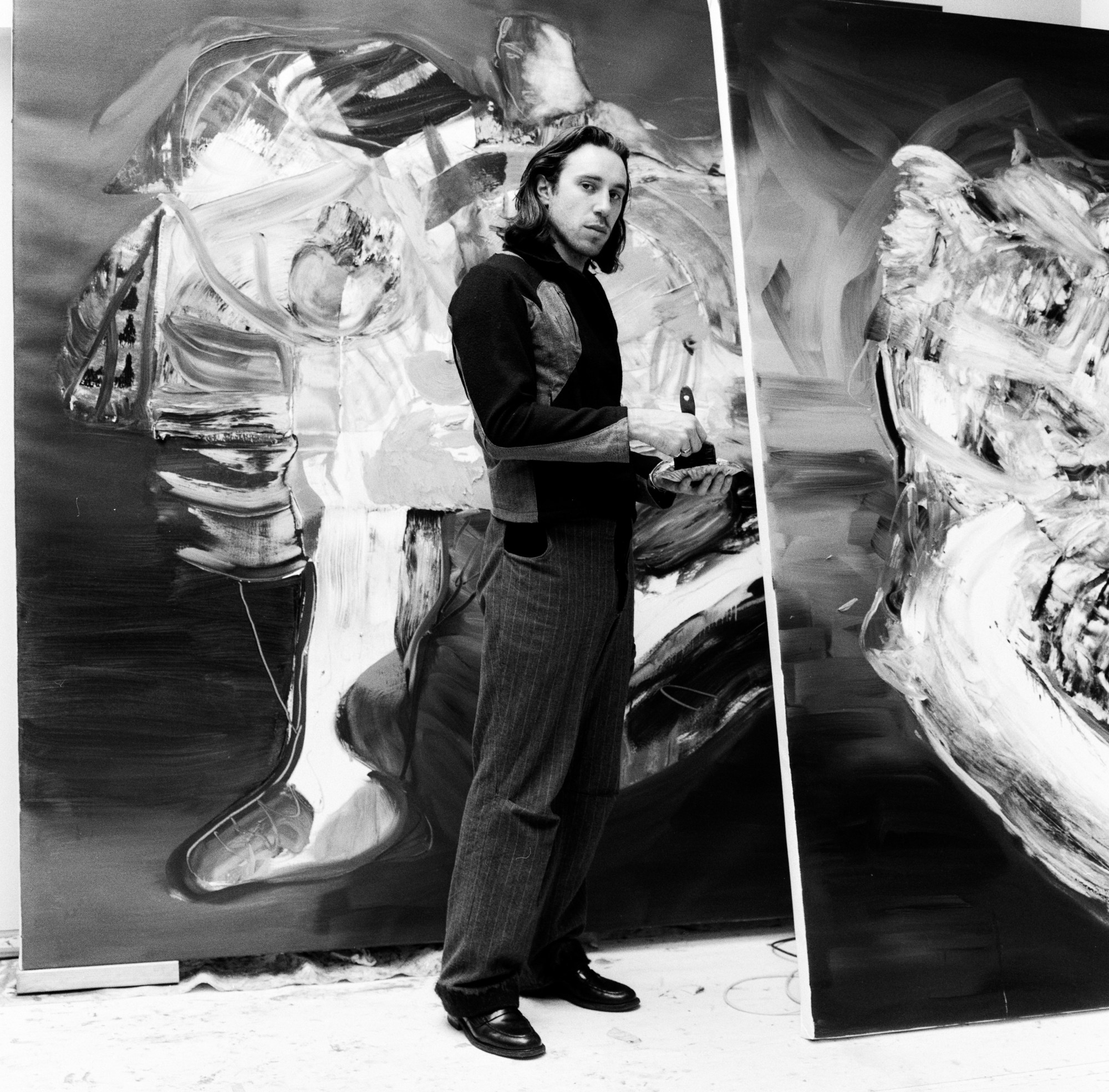
Although the works for the Marlborough show have already been taken, other, similar forms hover on half-finished canvases around the studio. “You’ll often find that the paintings [contain] floating orbits or worlds,” Alexander says. “They are usually this bubble of colour.” Within the bubble, the fictive and the real combine: memories fledging into invented stories, photos and screenshots distorting until they are unrecognisable or resist easy interpretation. Working across various mediums including film and textiles, recently the focus has narrowed solely to the many half-squeezed tubes of paint neatly arranged in different boxes on the studio table. During the pandemic he spoke to an older friend who was an artist, and she challenged him to devote himself solely to painting for three months. “And then three months turned into six months which turned into a year, and now I haven’t looked back.” He might still experiment outside of what he’s showing, but there’s a purity to painting – a chance to refine his love of “storytelling and narrative” in vivid, two-dimensional form.
Come September, he’ll be appearing in a show in New York at Gallery 57 curated by Angeliki Kim, where his work will be placed in conversation with other abstract expressionist painters. So much of the early artist’s career involves those breathless scrambles up the ladder – hoping for the right show, or gallery representation, or buyer, or even just any kind of nod to suggest that things are proceeding in the right direction. It takes a degree of confidence (and accumulated years of work and recognition) to pause and take stock.
Recently Alexander has begun painting in monochrome colours again, which is a palette he hasn’t used since art school. Often, we find ourselves rejecting the crude or youthful creative ideas that first propelled us forward, only to come back around to them later when we feel equipped to do something bolder, or defter, or more exciting with them. It might still take several attempts – a canvas with a thick black background apparently holds “a lot of frustration” and “a lot of energy” because it’s not quite there – but the attempt itself is important. It ensures that things never get too predictable. Trial and error requires both patience and willingness. “I’m not afraid to experiment… If it fails, that’s okay. It’s moving it forward. I do think this road that I’m on now feels like a natural progression.”
‘Face to Face: A Celebration of Portraiture’ is on show at Marlborough Gallery, London until 14 July 2023.
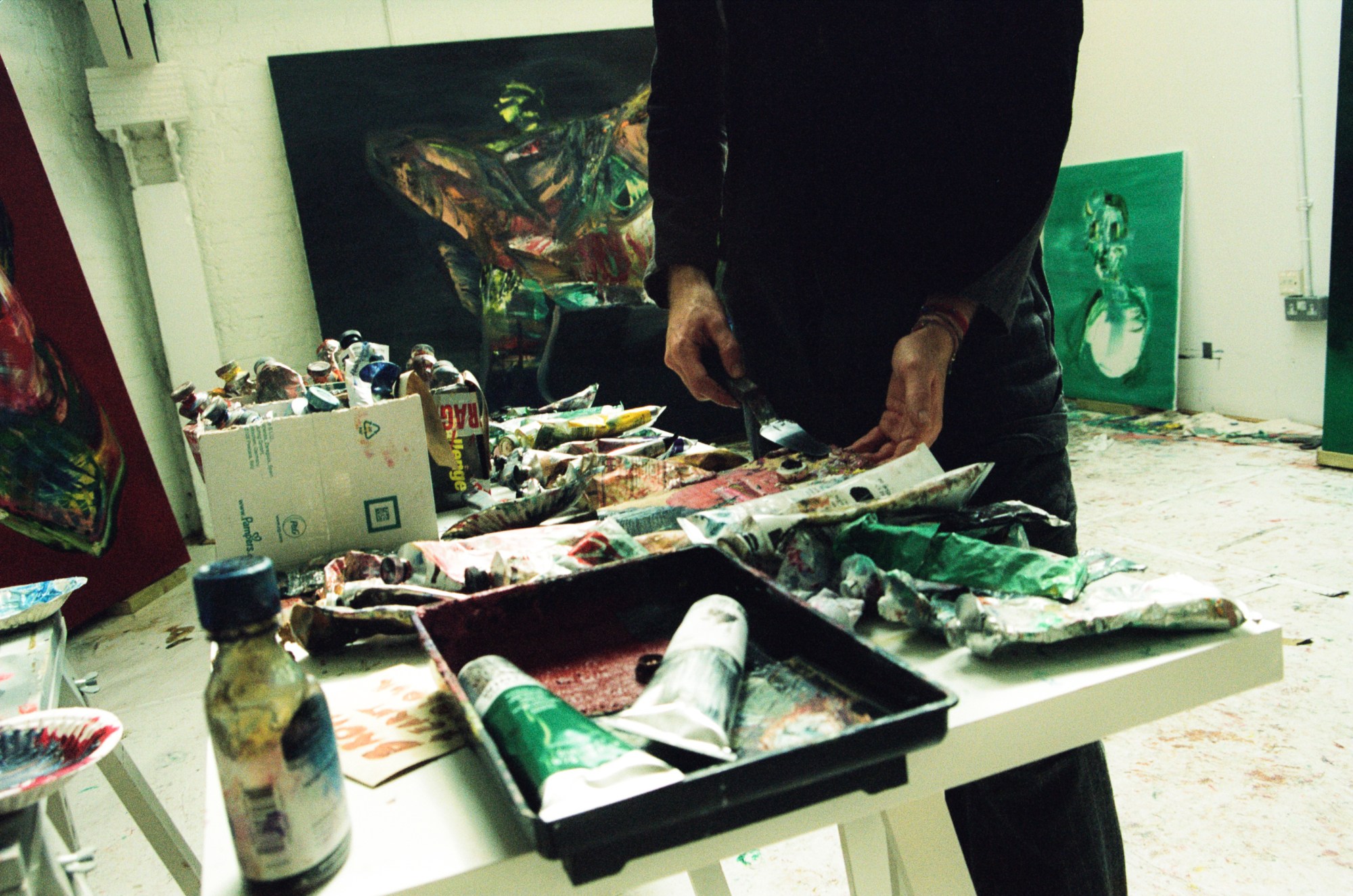
Credits
Photography Milo Matthew
